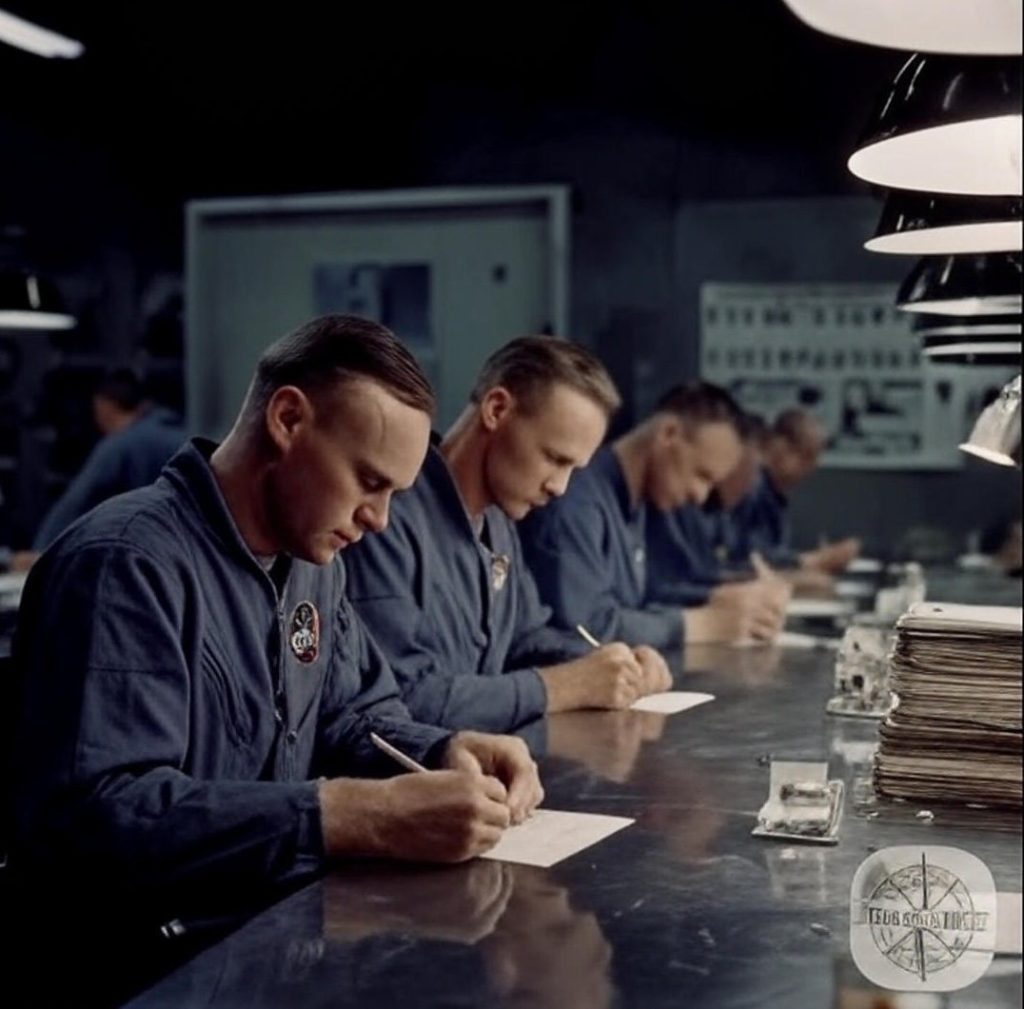As the world watched history unfold in July 1969 with the Apollo 11 mission to the Moon, few knew of a quiet, deeply personal act carried out by astronauts Neil Armstrong, Buzz Aldrin, and Michael Collins—one rooted not in science or exploration, but in love and fear.

In the weeks leading up to humanity’s most daring voyage, the Apollo 11 crew was faced with a sobering reality: no life insurance company was willing to underwrite their lives—not at a reasonable cost, at least. The unprecedented nature and extreme risks of the lunar mission made it virtually uninsurable.
With no financial safety net available for their families should the mission end in tragedy, the three astronauts devised a remarkable backup plan.
While in pre-launch quarantine, Armstrong, Aldrin, and Collins signed hundreds of postal covers—envelopes bearing images of space and the Apollo 11 insignia. These weren’t simply autographs. They were carefully designed to become valuable collectibles in the event of a disaster, a sort of “insurance policy made of ink.”
The signed envelopes were entrusted to a reliable friend, along with specific instructions: on the day of the launch, the covers would be postmarked and mailed back to the astronauts’ families. The assumption was that if the mission failed, the signatures of the crew who had perished during mankind’s greatest leap would hold immense historical and financial value. Their families could sell them as memorabilia to secure their future.
This quiet, ingenious gesture was a powerful blend of foresight, humility, and vulnerability—a far cry from the stoic, heroic image typically associated with astronauts.
What many don’t know is that this tradition didn’t end with Apollo 11. Astronauts from Apollo 12 through Apollo 16 followed suit, creating their own signed covers in case they too didn’t return home.
In the end, the Apollo 11 mission was a resounding success. All three astronauts returned safely, and the Moon landing became a defining moment of the 20th century. But the covers—those humble pieces of paper, signed in quiet hotel rooms and isolation chambers—remained. Today, they are highly prized collector’s items, not just for their rarity, but for the extraordinary story they represent: three men, on the edge of the unknown, thinking not only of glory, but of the loved ones they might leave behind.